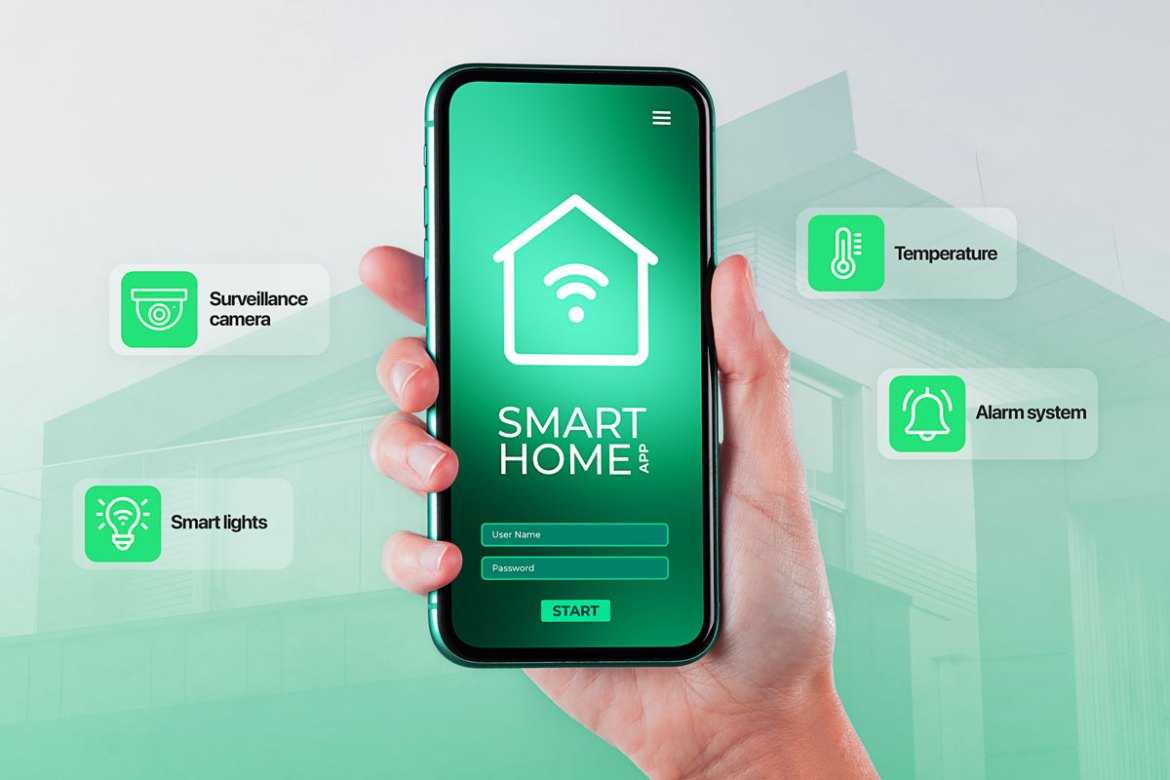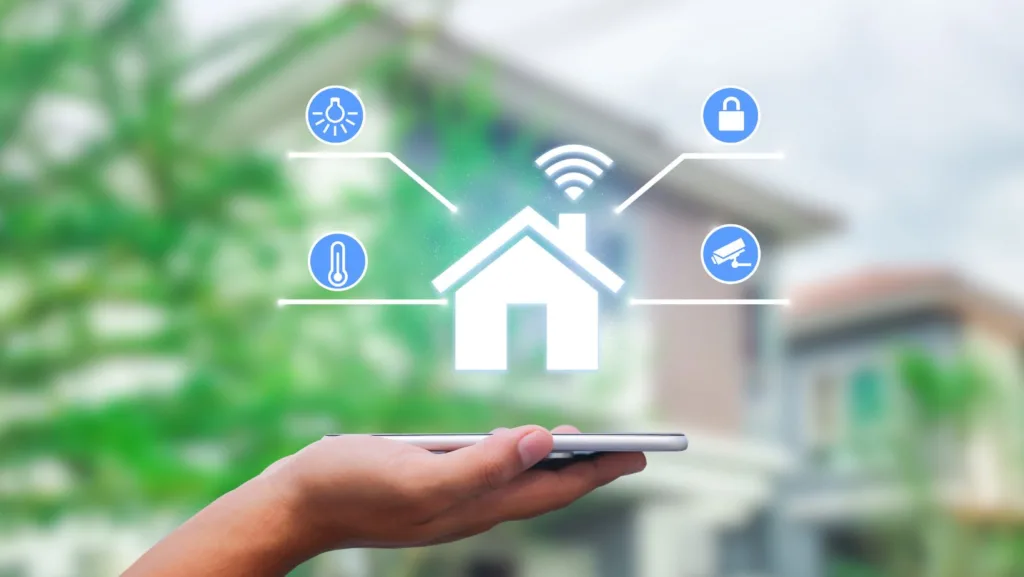Uncategorized
The Future Is Now: A Guide to Smart Home Essentials
In an age defined by connectivity and innovation, the concept of a “smart home” has evolved from a futuristic fantasy into an accessible reality. A smart home is more than just a collection of gadgets; it is an integrated ecosystem of devices that work in concert to enhance convenience, security, and efficiency. It is a home that anticipates your needs, responds to your commands, and automates daily tasks, freeing you to focus on what truly matters. From the moment you wake up to the minute you fall asleep, a smart home seamlessly adapts to your routine, creating a living environment that is both intuitive and deeply personal. This comprehensive guide will explore the essential components of a smart home, delving into the devices that form its foundation, the functionalities they offer, and the transformative impact they have on modern living. We will break down the core technologies, from central hubs to voice assistants, and examine how smart lighting, security systems, and climate controls are revolutionizing the way we interact with our living spaces.
The journey to a smart home can seem daunting, with an overwhelming array of products and platforms. However, at its core, a smart home is built on a few fundamental principles: a central control system, connected devices, and a way for you to interact with them. Understanding these building blocks is the first and most crucial step toward creating a home that is truly intelligent. This essay will demystify the technology, provide practical advice, and paint a vivid picture of a life enhanced by seamless automation, demonstrating that the future of home living is not a distant concept but an immediate possibility waiting to be embraced.
The Foundation: Smart Hubs and Voice Assistants
Every smart home, no matter how simple or complex, needs a central nervous system. This role is most often filled by a smart hub, a device that serves as the bridge between different technologies and protocols. While many devices can operate on their own, a hub enables them to communicate with each other, allowing for complex automations and scenes. For example, a hub can link your smart lock, your smart lights, and your smart thermostat, so that when you unlock your front door, the lights turn on and the temperature adjusts automatically. These hubs typically support various wireless communication protocols, such as Zigbee, Z-Wave, and Wi-Fi, ensuring compatibility with a wide range of devices from different manufacturers. A central hub transforms a collection of individual devices into a unified, cohesive system.
Hand-in-hand with the smart hub is the voice assistant, which serves as your primary interface for interacting with your smart home. Devices like the Amazon Echo with Alexa and Google Nest with Google Assistant have become household names, providing an intuitive and natural way to control your home with simple voice commands. From “Alexa, turn on the living room lights” to “Hey Google, what’s the weather today?”, these assistants are the gateway to effortless control. They can play music, answer questions, set reminders, and, most importantly, trigger automations and control your connected devices. For many people, a voice assistant is the most important smart home essential because it removes the friction of using a smartphone app for every single command, making smart home technology feel truly integrated into daily life.
Smart Lighting: Setting the Mood and Saving Energy
Smart lighting is often the first step people take into the world of home automation, and for good reason. It offers an immediate and dramatic improvement to daily life. The most common entry point is the smart bulb, which can be controlled remotely via an app or voice command. These bulbs do much more than just turn on and off. They allow you to dim the lights, change their color to create a specific ambiance, and set schedules to automate your lighting. Imagine waking up to a gentle, gradual increase in light that mimics a sunrise, or arriving home to a brightly lit house after a long day at work. Smart bulbs make this possible, and they also offer significant energy savings, as they are almost universally LED-based.
For a more comprehensive solution, smart light switches provide the ability to control an entire fixture or group of lights, including those with standard, non-smart bulbs. This is a perfect solution for older homes or for rooms where you want to maintain a traditional light switch while still enjoying smart functionality. You can program these switches to turn on or off at specific times, or integrate them into more complex automations, such as having the porch light turn on when your smart doorbell detects motion. The versatility of smart lighting, from individual bulbs to entire circuits, makes it an essential part of creating a home that is not just bright but also intelligent and energy-efficient.
Security and Peace of Mind: Smart Cameras and Locks
One of the most compelling reasons to invest in a smart home is the enhanced security and peace of mind it provides. A fully connected smart security system allows you to monitor and protect your home from anywhere in the world. Smart cameras, both indoor and outdoor, are a cornerstone of this system. They offer high-definition video feeds, motion detection, and push notifications to your smartphone when activity is detected. Many cameras also include features like two-way audio, allowing you to speak to a delivery person or a family member, and night vision, ensuring your home is protected around the clock. The simple ability to check in on your pets or your children from your phone, no matter where you are, is an invaluable benefit.

Complementing smart cameras are smart locks, which eliminate the need for traditional keys and provide a new level of control and security. With a smart lock, you can lock and unlock your door from your smartphone, grant temporary access to a friend or a service provider with a unique code, and receive notifications every time the door is locked or unlocked. This is particularly useful for rentals or when you have a pet sitter, as you can grant access without having to give out a physical key. Paired with a smart doorbell camera, which lets you see, hear, and speak to visitors from your phone, you can create a complete and comprehensive front-door security solution. The convenience of a keyless entry combined with the security of a remotely monitored system makes smart locks and cameras indispensable smart home essentials.
Climate Control: Comfort and Efficiency at Your Fingertips
A smart home is also an efficient home, and nowhere is this more evident than in the area of climate control. Smart thermostats are at the forefront of this revolution, offering a level of control and insight that traditional thermostats simply cannot match. Unlike a standard thermostat that only turns on or off based on a set temperature, a smart thermostat can learn your schedule and habits, automatically adjusting the temperature to save energy when you are away and to ensure your home is comfortable when you are present. Many models also use geofencing, automatically lowering the temperature when your smartphone leaves a certain radius and raising it when you are on your way back.
Beyond thermostats, other climate control devices like smart blinds and smart shades can further optimize your home’s energy use. They can be programmed to automatically open in the morning to let in natural light and heat, and close in the afternoon to block the sun and reduce the need for air conditioning. This seamless automation not only saves money on your utility bills but also creates a more comfortable and responsive living environment. The ability to monitor your energy usage in real-time from your phone and make adjustments on the fly gives you an unprecedented level of control over your home’s efficiency, making smart climate control a true game-changer.

Beyond the Basics: Entertainment, Appliances, and the Future
Once the core essentials are in place, the world of smart home technology opens up even further. Smart entertainment devices, such as smart TVs and speakers, can be integrated into your system, allowing you to control music and video playback with your voice. You can simply say, “Alexa, play my morning playlist,” and your favorite music will fill the room. Similarly, smart appliances, from refrigerators that can tell you when you are running low on milk to ovens that can be preheated from your phone, are bringing a new level of convenience to the kitchen.
The future of the smart home is one of increasing interconnectedness and intelligence. As artificial intelligence and machine learning continue to evolve, our homes will become even more capable of anticipating our needs. Imagine a home that can sense your mood and automatically adjust the lighting, music, and temperature to create a soothing environment, or a security system that can differentiate between a family member and a stranger based on their gait. The next generation of smart home technology will move beyond simple automation to true intuition, making our living spaces more than just a place to live, but a responsive and intelligent partner in our daily lives.
In conclusion, a smart home is not a single product but an evolving ecosystem designed to make life easier, safer, and more efficient. By starting with the foundational essentials—a smart hub and a voice assistant—and then gradually adding smart lighting, security systems, and climate controls, you can build a connected home that is perfectly tailored to your lifestyle. The technology is no longer a luxury but an accessible and valuable investment in your comfort, peace of mind, and the future of your home. It’s a journey of continuous discovery, and a step towards a more connected, convenient, and intelligent way of living.

